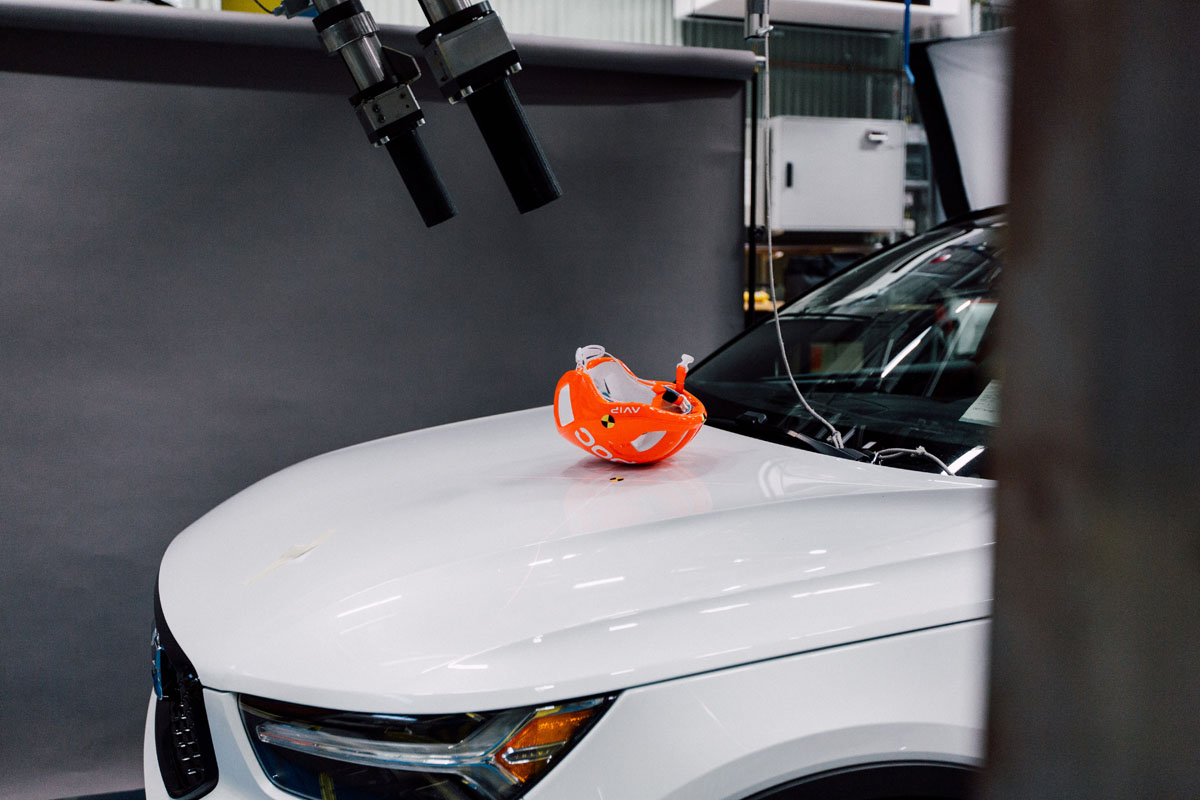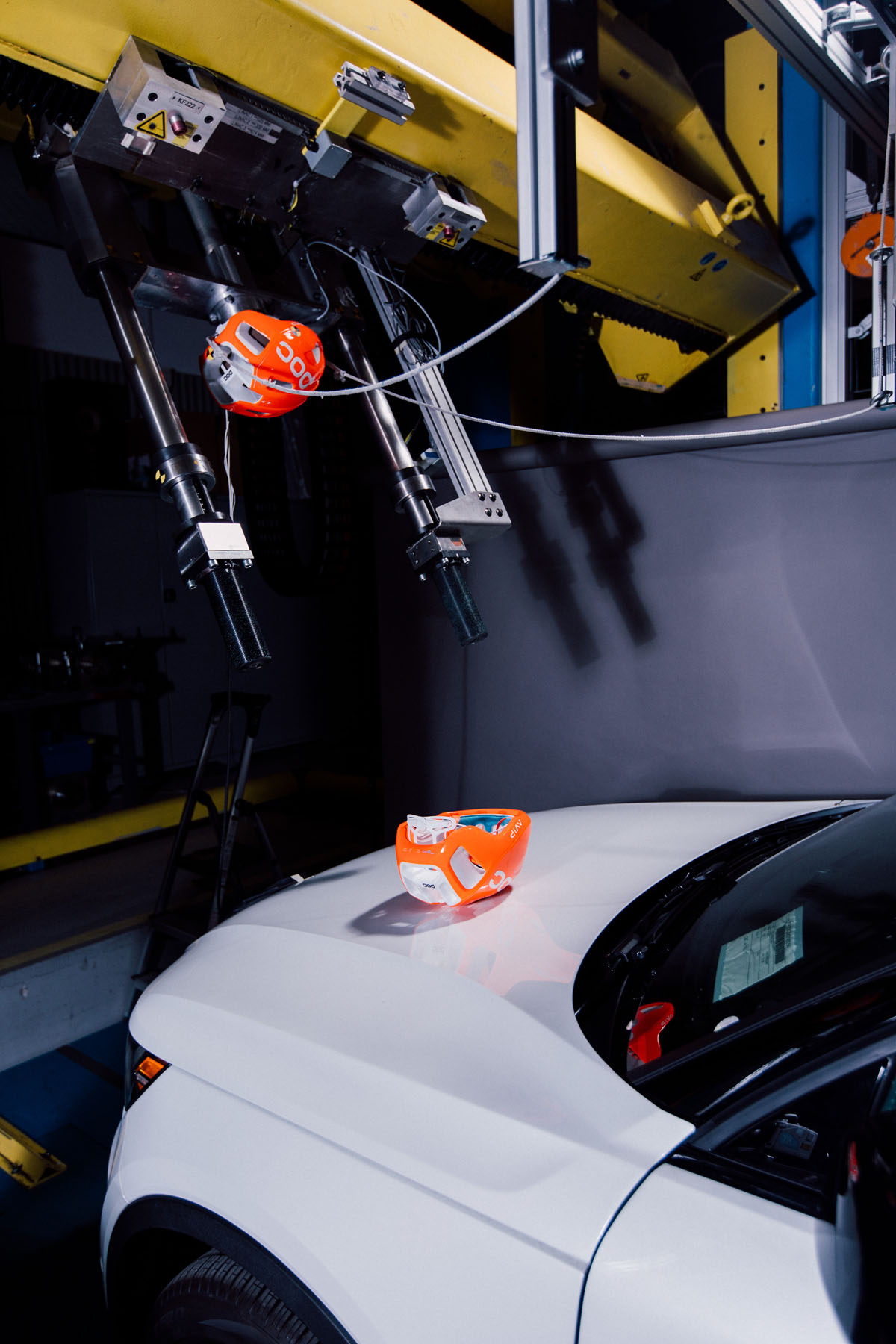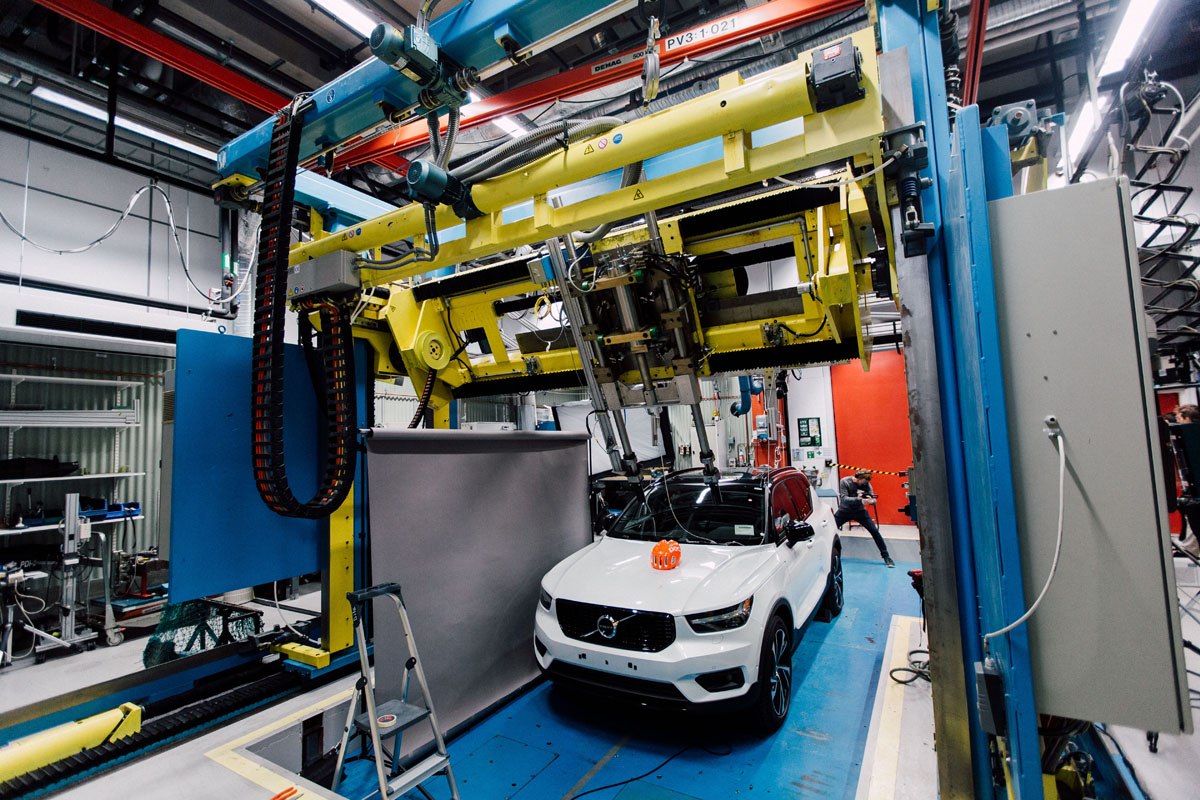Going back to 2014, POC and Volvo have a history of teaming up for safety initiatives. From Volvo’s auto braking system with cyclist detection, to working on bike helmets that will communicate with cars, the duo have worked together on a number of projects meant to keep cyclists, pedestrians, and drivers safer. Now, the two Swedish companies are getting together once again, this time to improve overall bike helmet safety.
The reasoning stems from how bicycle helmets are currently tested – which the press release calls “rudimentary.” Typically, helmets are mounted into test rigs and dropped from various heights onto specific flat or angled surfaces – though sometimes the testing can be more advanced in the case of the new Giro Aether with MIPS Sperical.
But POC and Volvo say that there is a critical component missing in these tests – vehicles. If you’re trying to create a helmet that better protects a rider in a car-bike crash, you may need to consider how a helmet reacts when struck by say, the hood of a car. Which is why new tests are being created by the duo in Volvo’s state-of-the-art testing facility in Gothenburg, Sweden. Using a static car hood as the impact surface, helmets are mounted to crash tummy heads and then placed on test rigs where they’re hurled towards the hood in different angles and speeds.
Part of a larger research project that involves POC Lab, Volvo Cars, KTH Royal Institute of Technology, MIPS, and Autoliv, the project is being partially funded by Vinnova and the findings of the study will be made publicly available at the conclusion.
Press Release
Volvo Cars, a leader in automotive safety, is teaming up with top Swedish sports and safety brand POC for a series of world-first crash tests of bike helmets against cars as part of a groundbreaking new research project that aims to further protect cyclists.
The partnership is the latest example of Volvo Cars’ leading position in safety development and its ambition to improve road safety for all through a collaboration and knowledge-sharing approach.
Accidents between bikes and vehicles can often lead to serious injury or death, which is why Volvo Cars has a clear strategy to avoid these types of accidents completely with the help of active safety technologies.
Cyclist detection with full auto brake uses the car’s cameras and radars to detect cyclists, warn the driver of an imminent collision and apply the brakes if further action is needed. It is a development of Volvo Cars’ automatic emergency braking and pedestrian detection systems, in line with its safety vision.
The Volvo-POC research project consists of a number of specially designed crash tests at the famous Volvo Cars safety research facilities in Gothenburg, Sweden and is part of a wider research project to understand the types of long-term injuries sustained by cyclists.
During these tests, POC bike helmets are worn by crash dummy heads mounted on a testing rig, from where they are launched towards different areas of the hood of a static Volvo car, at different speeds and angles for various measurements.
The tests are based on existing regulatory test procedures for pedestrian head protection. This allows Volvo Cars and POC to make a direct comparison between wearing a helmet and not wearing a helmet.
Current bike helmet testing procedures are fairly rudimentary, involving helmets being dropped from different heights on either a flat or an angled surface, and do not take into account vehicle to bike accidents. The Volvo-POC project aims to further refine and advance such testing.
The learnings from the research project will help POC make its helmets safer and more protective in the event of a car-bike accident, while the tests will also provide valuable insights and learnings for Volvo Cars into these types of accidents for future development.
“This project with POC is a good example of our pioneering spirit in safety,” said Malin Ekholm, head of the Volvo Cars Safety Centre and one of the company’s leading safety engineers. “We often develop new testing methods for challenging traffic scenarios. Our aim is not only to meet legal requirements or pass rating tests. Instead we go beyond ratings, using real traffic situations to develop technology that further improves safety.”
With over 60 international awards for safety, innovation and design, POC has built a reputation for challenging conventional wisdom and looking at new research, science and innovation to bring forward new ways of thinking to reduce accidents.
“Much like Volvo Cars, safety is at the very centre of our mission and drives all our ideas and innovations,” says Oscar Huss, head of product development at POC. “By working closely with scientific leaders in the POC Lab we strive to lead the way in introducing new safety ideas. Certification standards are essential, but they should never limit our willingness to look beyond their parameters to find better and more innovative ways to reduce the consequences of accidents.”
In recent years Volvo Cars has focused on also protecting people outside its cars. For example, Volvo Cars launched its pedestrian detection with full autobrake in 2010 and cyclist detection with full auto brake in 2013. Both technologies come as standard in all Volvo cars as part of the City Safety package and have helped to improve overall traffic safety.
In an earlier collaboration, Volvo Cars and POC worked on a pilot to connect bike helmets with cars in order to help avoid accidents.


